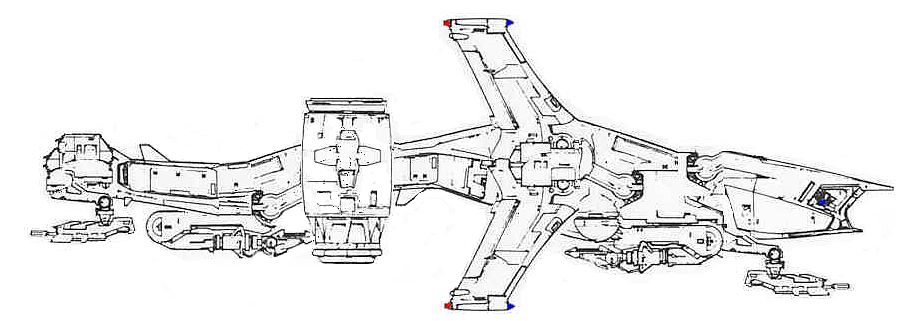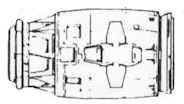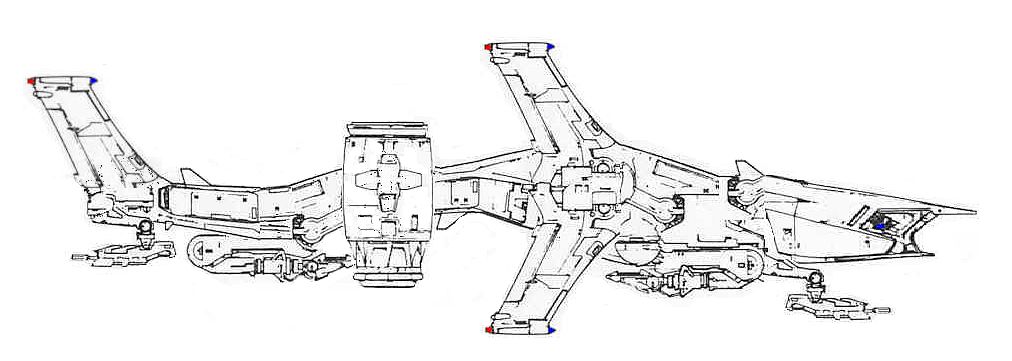
TECHNICAL DATA
AERIAL HK- MODEL A5 TYPE
670c SERIES 300- "SUPPRESSOR"
HEAVY GROUND ATTACK / CLOSE AIR SUPPORT UNIT
____________________________________________________________

First Generation "Suppressor" CAS plasma gunship
The A5 was SKYNET's later model (02182019AD to OFFLINE) dedicated ground attack / support design, its use was seen shortly after the Resistance began its first organized campaigns against SKYNET. While the A4 aerial was sufficient for general close air support, the A5 was much more dedicated in that role, giving up some speed and maneuverability in trade for increased survivability (thanks to 3mm thicker hybrid armor plating), better electronics and the addition of not only a second weapon mount but also more powerful weapons. The A5 was somewhat less agile than the A4 but it more than made up for this by mounting two independently operating high speed heavy duty electric weapon mounts which could depress their weapons almost straight down below the unit. The first A5s were armed with a Type 3 Series D Model 7 rapid pulse phased plasma gun (the same as the late model production run A4s) but second production class A5 units added a heavier twin capacity mount that carried two Type 4 Series C Model 5 rapid pulse phased plasma guns with the improved cooling and cohesion sleeves mounted to the co-linear muzzle attenuators. Three hardpoints (mounted one to each side and one directly below) allowed the A5 to carry a wide variety of general purpose rapid fatigue close support weapon systems that could be changed out at any docking station by an automated carousel handling process. Hardpoint Weapon systems included chemical and solid ejectors, explosive munition dispensers, and various types of rapid fire high energy weapon pods.
The A5 was more heavily armored than the A4, with a long list of case hardened components designed to withstand withering fire and still remain air-worthy and combat operational. Three independently operated batteries of armored white and infra-red high intensity spotlights allowed the unit to flood the target area with illumination while its sensors and scanners were capable of full spectrum target acquisition as well as visual comparison modes whereby all aspect images were checked by powerful dedicated microprocessors to see if movement occurred between individual frames of data feed (sampled at one thousand frames per second in early A5 series units, later at five thousand frames per second in second production class units).
Almost twice as long as the A4, the A5 nonetheless had superior engines (second generation high capacity variable stall / variable speed electric hyperfans) and far better combat electronics (Series 3 Ver 5.0A). its top speed was slightly less, as was agility but the control surfaces and command datasets were geared to increasing the agility and maneuverability of the A5 at low speeds, ranges of operation where the A4 was considered vulnerable to counter attack but layers of operation at which the A5 was designed to take advantage of and operate within.
SKYNET's later tactical doctrines dictated that a brace of four A5s would move in ahead of the A8 transport units to pacify a landing zone before the transports arrived. After the initial pacification of the landing zone, the A5's would move on to close air support protocol, staying on station and continuing to pacify any human resistance in the area while ground units worked the zone over from below. In later stages of the War, SKYNET equipped several A5s with the same heuristically based hardware and protocols as it did the Centurions, in effect, creating aerial managers of its forces, allowing A5s to assume some command role and to use other units as mission available assets as required. In this role, they performed as a less expensive (and less effective) version of the A9 850T units. This was a stop-gap measure instituted by SKYNET when the facilities to produce the A9 series units were lost (but the facilities to produce the control hardware were not). This allowed SKYNET to fit some of the high capacity C3 hardware into various other units, hoping to spread around the A9's function through multiple overlapping layers. The A5 and the Centurion were just two aspects of this particular protocol.

MODEL A5 with hyperfan in
place, rotated for level flight. Tripod landing claws retracted, and plasma gun
turrets set to standard coverage.
Both turrets could fire to each side, giving the
A5 an impressive "broadside" capacity.
Each turret could track and engage separate targets or be brought to bear on a single target.

Close-up detail of the second
generation of electric hyperfan engine
as found on all later Aerial units and models circa 2011 to 2029 AD
________________________________________

Second generation "Suppressor" Product Improved Development, sometimes referred to as a "Gar" by Resistance personnel.
The re-implementation of the vertical rear control surfaces allowed the Model A5 increased stability in high speed flight.
_______________________________________